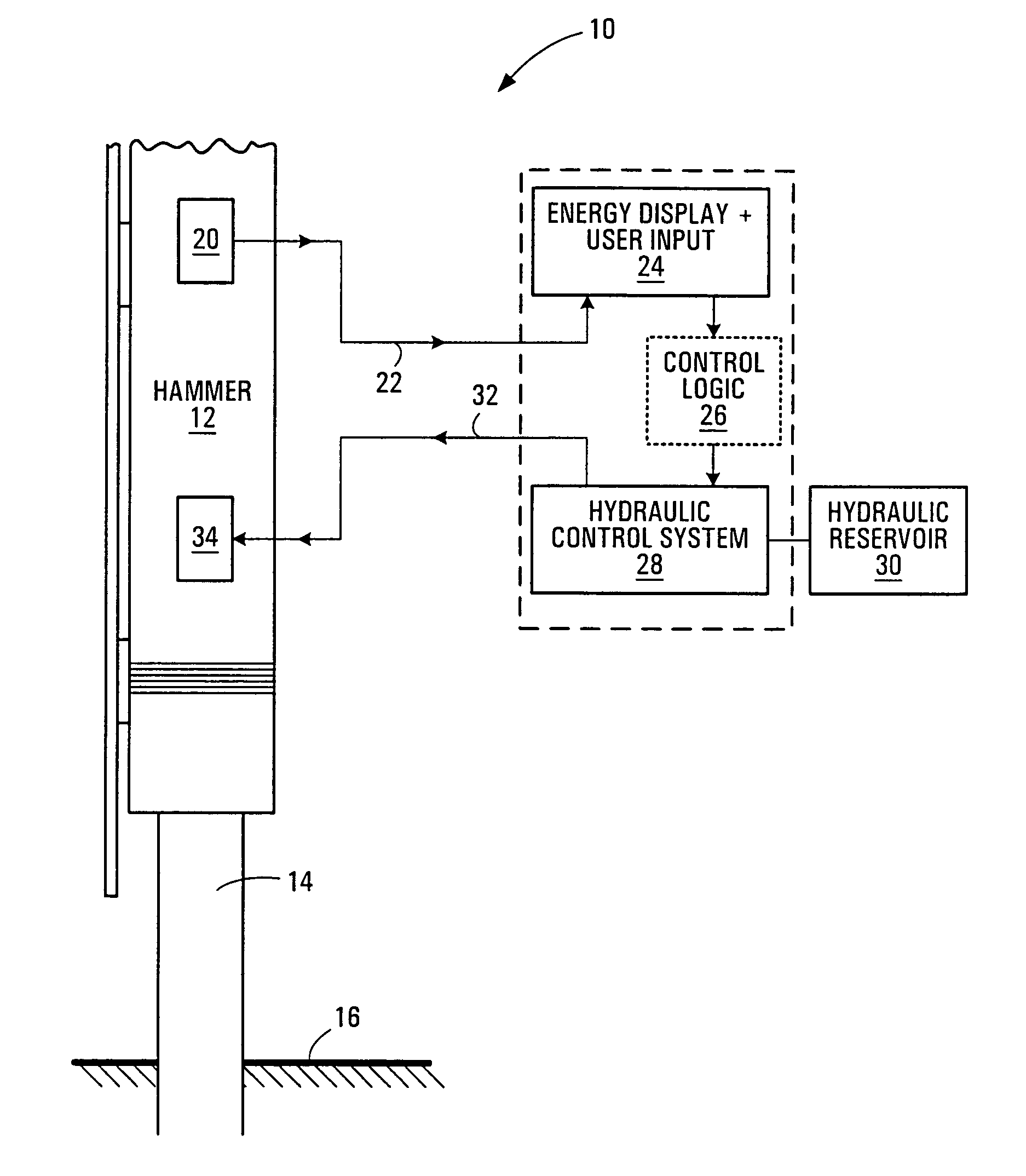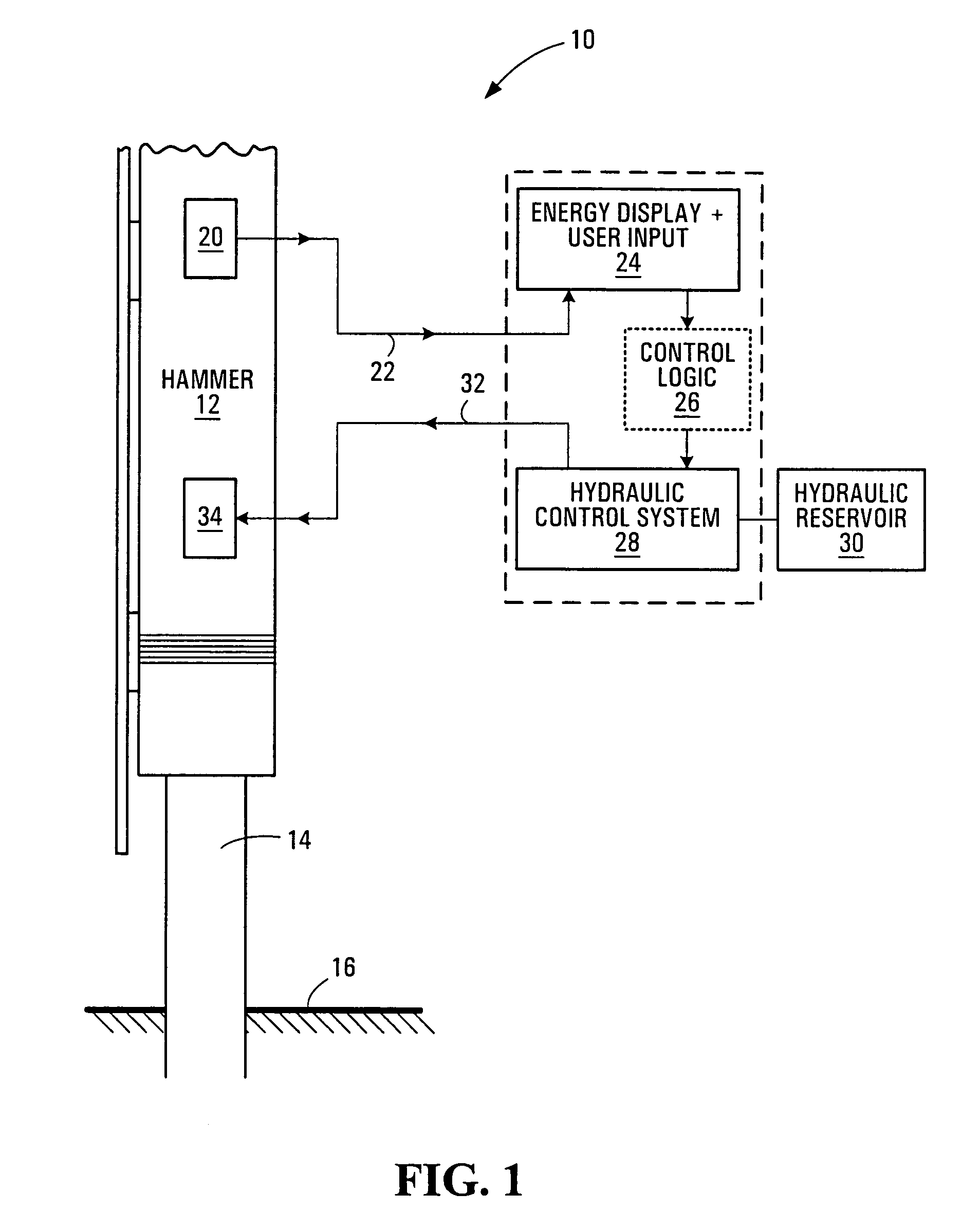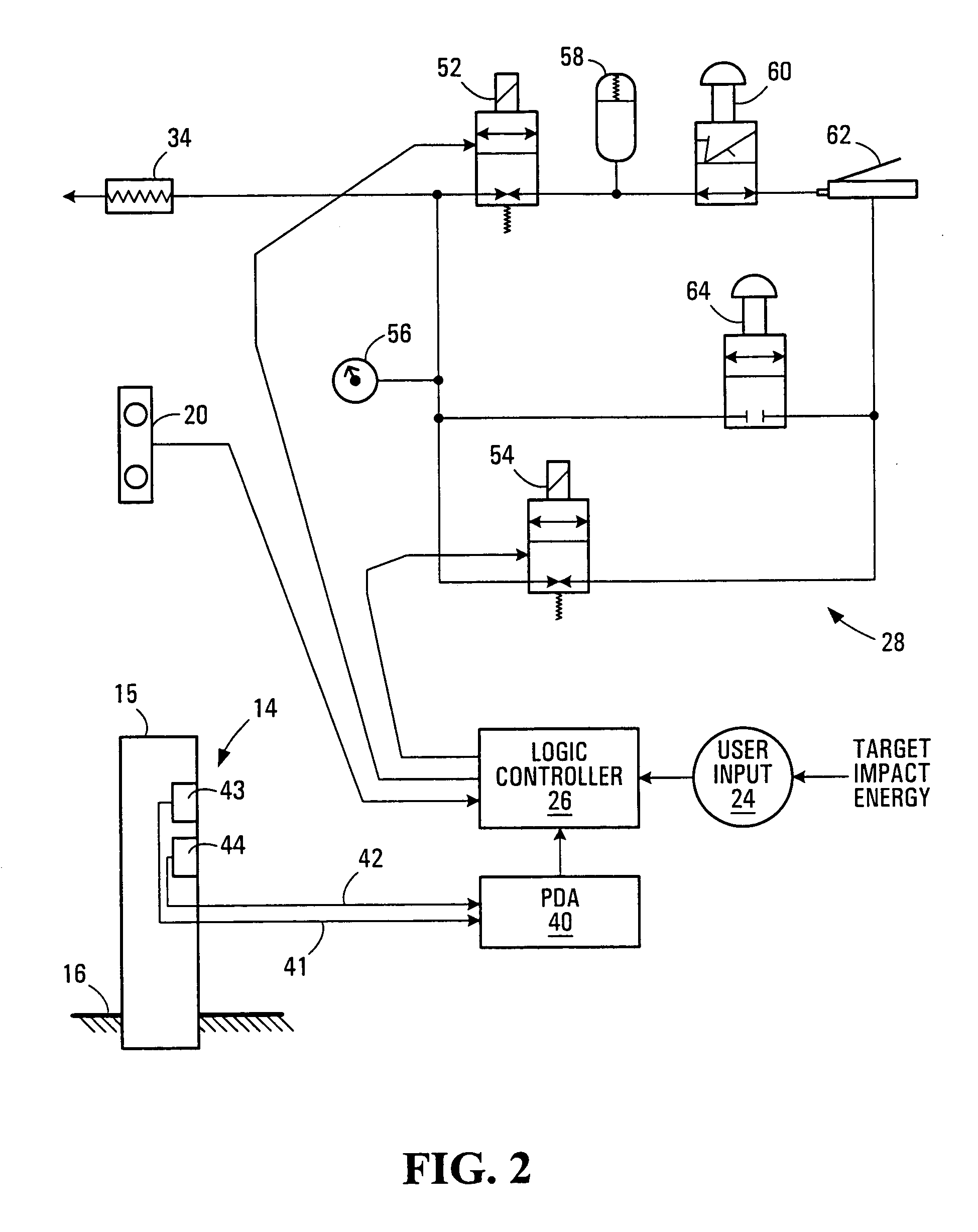Pile driver with energy monitoring and control circuit
a technology of control circuit and driver, which is applied in the direction of bulkhead/pile, material strength using repeated/pulsating forces, portable percussive tools, etc., can solve the problems of soil, time and energy loss, heat and sound, deformation and energy dissipation,
- Summary
- Abstract
- Description
- Claims
- Application Information
AI Technical Summary
Benefits of technology
Problems solved by technology
Method used
Image
Examples
Embodiment Construction
[0018]Referring to FIG. 1, a pile driver 10 comprises a hammer 12, also known as a ram, which is used to impact the top of a pile 14 so as to drive the pile 14 into the ground 16. In one embodiment, the pile driver 10 is a diesel pile driver. It should be appreciated that embodiments of the present invention can be applied to other types of pile drivers, such as hydraulic pile drivers, pneumatic pile drivers and drop hammers.
[0019]Located on the hammer 12 is a velocity sensor 20 that is capable of measuring the velocity of the hammer 12 just before it impacts the pile 14. The velocity sensor 20 is preferably comprised of two magnetic proximity switches (not shown). The pair of magnetic proximity switches is located on the side of the hammer 12. The proximity switches are set to close approximately 1 inch above impact. The time elapsed between the closing of the magnetic proximity switches is transduced into a velocity reading. Alternatively, the velocity sensor 20 could be radar, su...
PUM
| Property | Measurement | Unit |
|---|---|---|
| impact velocity | aaaaa | aaaaa |
| impact energy | aaaaa | aaaaa |
| velocity | aaaaa | aaaaa |
Abstract
Description
Claims
Application Information
 Login to View More
Login to View More - R&D
- Intellectual Property
- Life Sciences
- Materials
- Tech Scout
- Unparalleled Data Quality
- Higher Quality Content
- 60% Fewer Hallucinations
Browse by: Latest US Patents, China's latest patents, Technical Efficacy Thesaurus, Application Domain, Technology Topic, Popular Technical Reports.
© 2025 PatSnap. All rights reserved.Legal|Privacy policy|Modern Slavery Act Transparency Statement|Sitemap|About US| Contact US: help@patsnap.com



